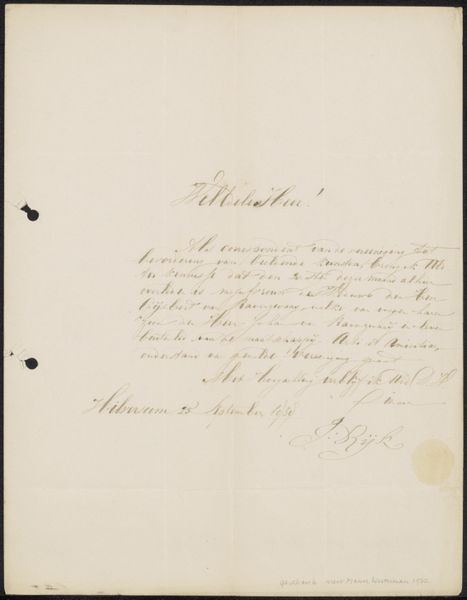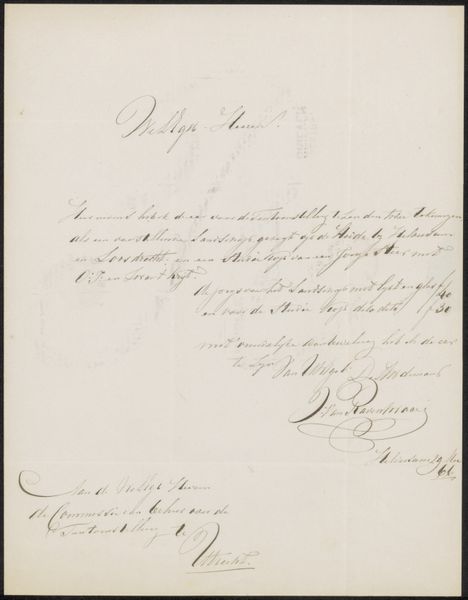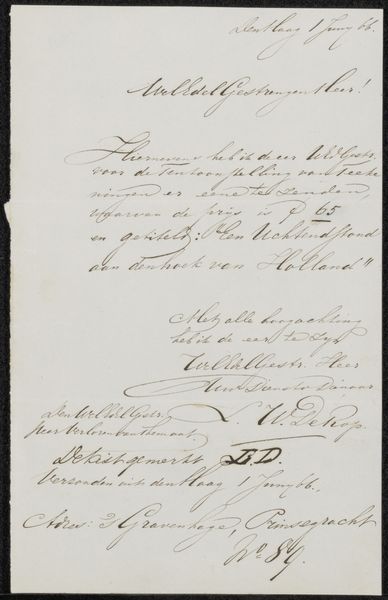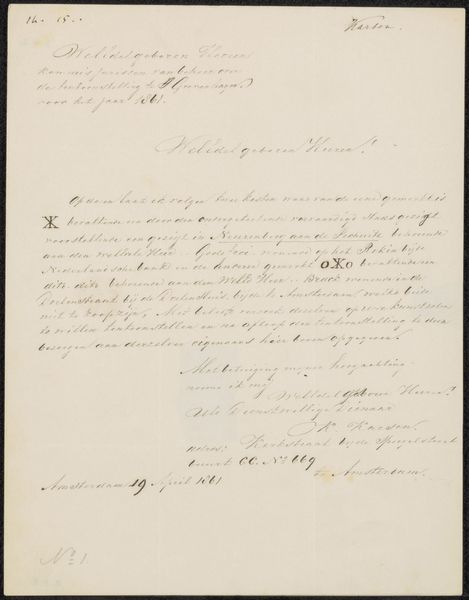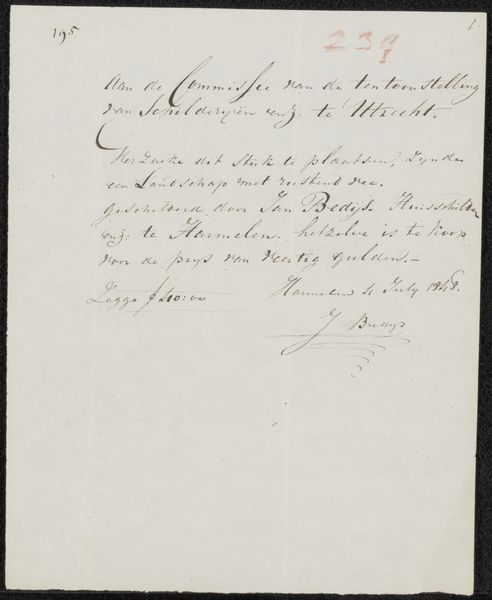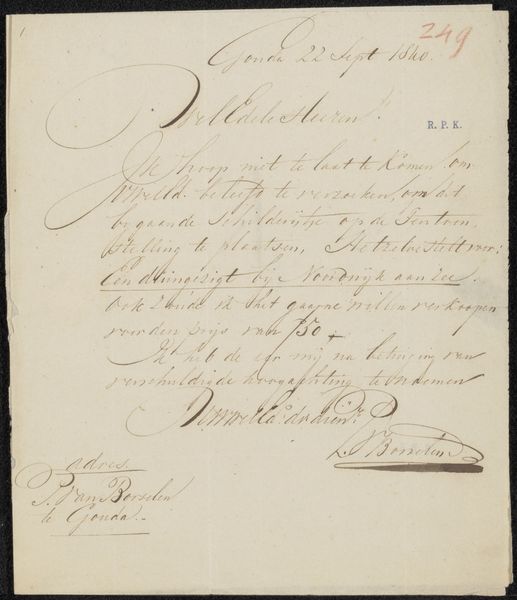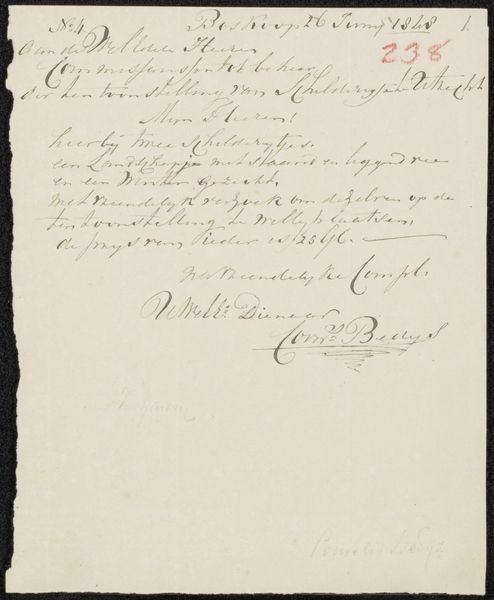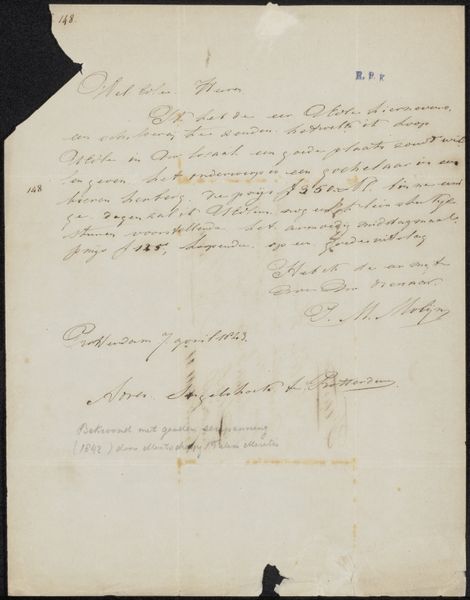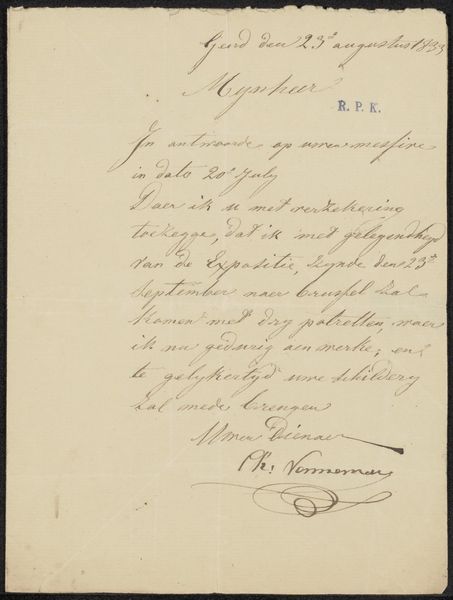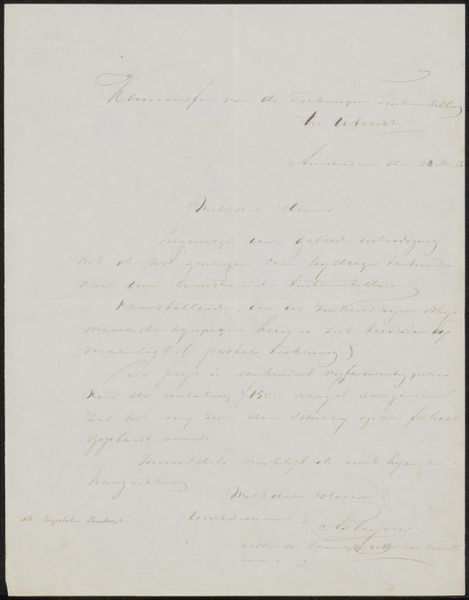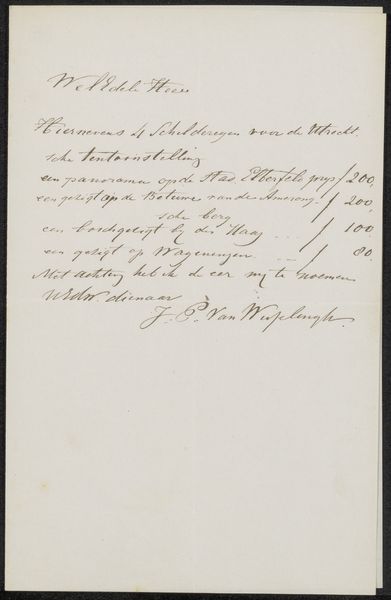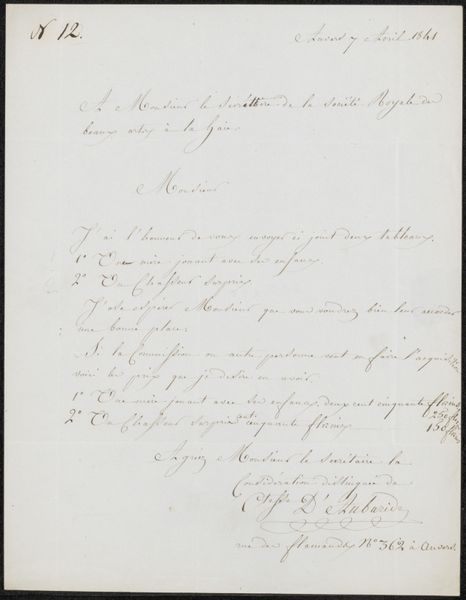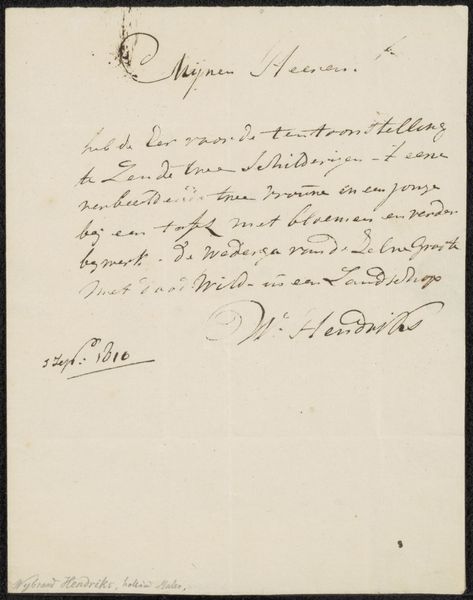
Brief aan Commissie van de Tentoonstelling van Levende Meesters in Den Haag Possibly 1841 - 1844
0:00
0:00
albertusbrondgeest
Rijksmuseum
drawing, paper, ink, pen
#
portrait
#
drawing
#
paper
#
ink
#
romanticism
#
pen
#
calligraphy
Copyright: Rijks Museum: Open Domain
Curator: This piece, entitled "Brief aan Commissie van de Tentoonstelling van Levende Meesters in Den Haag", or "Letter to the Commission of the Exhibition of Living Masters in The Hague," is possibly dated between 1841 and 1844. The letter is currently held in the Rijksmuseum's collection and was penned by Albertus Brondgeest. Editor: Immediately, what strikes me is the paper itself – aged, stained slightly. You get a sense of the document’s history simply by observing its material state. Curator: The composition utilizes the inherent grid-like structure of written text, with an emphasis on the aesthetic qualities of calligraphy. Look at the artist's name and the use of flourishes that elevate the penmanship beyond pure utility, creating an ornate visual counterpoint to the message itself. Editor: Yes, and those subtle ink variations suggest much about the writing process – the pressure, the flow, the very act of creating the letter in perhaps imperfect conditions. The work appears not as a flawless artifact, but a humble piece of human labor. What would he have been hoping for? Curator: Semiotically, each word functions as a sign, carrying both denotative meaning and a connotative charge related to the artistic milieu of the time. Furthermore, the act of addressing the commission imbues the work with a sense of Romantic-era artistic aspiration, mediated by established institutional power. Editor: What really hooks me is that we're confronted with this evidence of work – art as labor, communication as production – far removed from any traditional fine art framing device like oils or bronze. The pen and ink make the point beautifully: ideas physically manifested. Curator: Indeed, its elegance lies in the very simplicity of its textual structure, amplified by Brondgeest’s elegant strokes. He’s embedded aesthetic considerations even within this humble form of correspondence. Editor: Precisely! It serves as a powerful testament to labor, the social lives of material, and their lingering narratives. It brings forth the humanity of a single author. Curator: And within that humanity, we can grasp at underlying structural patterns of the time, still resonant through the beauty of pen on paper. Editor: Absolutely. Each mark reminds me how we work with our environment to communicate something meaningful.
Comments
No comments
Be the first to comment and join the conversation on the ultimate creative platform.
